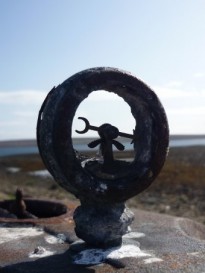Cemetery, churchyard, graveyard, kirkyard, words that bring a gleam to the eye of family history addicts. Handled carefully, they can be treasure chests but there are a few caveats: not everyone had a gravestone, some stones have gone or are no longer readable and, most importantly, the information on them is not always correct. Cemetery is this week’s set topic for the #52ancestors challenge.
A gravestone at Ousna churchyard, South Walls, Orkney took me round the world practically.
Jemima Ross (1846-1866)
Had it not been for this gravestone inscription, I might have never investigated her life further, but “interred in St Helena”? I had to know more. Let’s start at the beginning.
investigated her life further, but “interred in St Helena”? I had to know more. Let’s start at the beginning.
Early life
Jemima Ross was a first cousin of my paternal great grandfather, John GH Ross (1854-1945); their fathers, James and Hugh, were brothers. That means she is my first cousin three times removed.
She was born at North Ness, North Walls on 12 January 1846, the first child of James Ross and his wife Susannah Corrigill. James, like my x2 great grandfather Hugh, was a native of Stroma, parish of Canisbay, Caithness. In the 1851 census, Jemima and her parents plus two younger sisters, Charlot and Elizabeth, were recorded at North Ness. At that time, James, Jemima’s father, was a fisherman and pilot.
By the 1861 census, James had become a grocer, possibly taking over from his father-in-law, Donald Corrigill, at North Ness. There were five more siblings too: Walter, Donald, James, Susanna and John.
Growing up
Jemima’s young life changed dramatically within a few weeks of the 1861 census when her mother Susanna died on 16 June 1861. As the oldest daughter, she would have had to assume a lot of responsibility, not least with a six month old brother John. Two months later on 21 August her ten year old brother Walter also died.
Unlike some young women in similar circumstances, her opportunities were not totally curtailed for on 16 February 1864, Jemima, 18, married Captain George Bruce, 31. He was one of a family of sea captains whose parents lived nearby at Little Ayre, North Walls. George and Jemima’s first child, a son Benjamin, was born on 19 December 1864, at North Ness.
At sea
At some point in the next year or so Jemima went to sea with her husband George, possibly taking young Benjamin with her. A second son James was born in Colombo, Sri Lanka, around 1866, according to the 1871 census.
The Charlotte Ann, port of London, the barque of which George was master, left Colombo on 17 May 1866 but on 24 May Jemima died at sea, with “childbirth” noted as the cause of death in the St Helena death register. The gravestone in Orkney is thus a few days out with her date of death. She was only 20.
As she died at sea, it is highly likely that she was also buried at sea. According to the Shipping Intelligence entry in the St Helena Guardian on 25 July, the Charlotte Ann’s passage from Ceylon (Sri Lanka) to St Helena took 65 days so arrival would have been around 21 July, almost two months after she died. There is however a memorial for Jemima at St Paul’s Cathedral Cemetery, Jamestown, St Helena (Gravestones and Memorials Register).
On 23 July 1866 the Charlotte Ann sailed from St Helena for London. Frustratingly, the logbook for the Charlotte Ann’s voyage has not survived so further details may never be known. How did the crew manage with a newborn on board? Was there another woman to look after him? Those are just two of my questions.
Jemima Ross, a long way from home, and but for that gravestone at Ousna I would probably never have found out what happened to her.
James, the far travelled baby
He is the subject of a new blog post.
I am grateful to the Custodian of Records, St Helena Archives for supplying copies of records relating to Jemima and for the St Helena Guardian shipping intelligence.
All my #52ancestors challenge posts are here.


Fascinating story, but so sad that Jemima did not live to bring up her children and to pass on exciting stories.
Thanks. Sadly her son Benjamin seems to have had no children so there may well be no descendants to tell even part of her story. He did have some half-siblings though as George Bruce remarried (but died in 1878).
Oh, dear, how sad she died at such a young age–and what life she led. I'm glad you're keeping her memory alive by telling her story here!
How fortunate that she has a memorial stone pointing the way to tell her story. A burial at sea would normally mean her "disappearance" with no other details to explain what happened to her. I have many seafaring ancestors and several "disappeared" and I am sure were buried at sea.
Yes mariners can be quite difficult to trace. Newspapers sometimes have articles about about shipwrecks which can be very helpful.